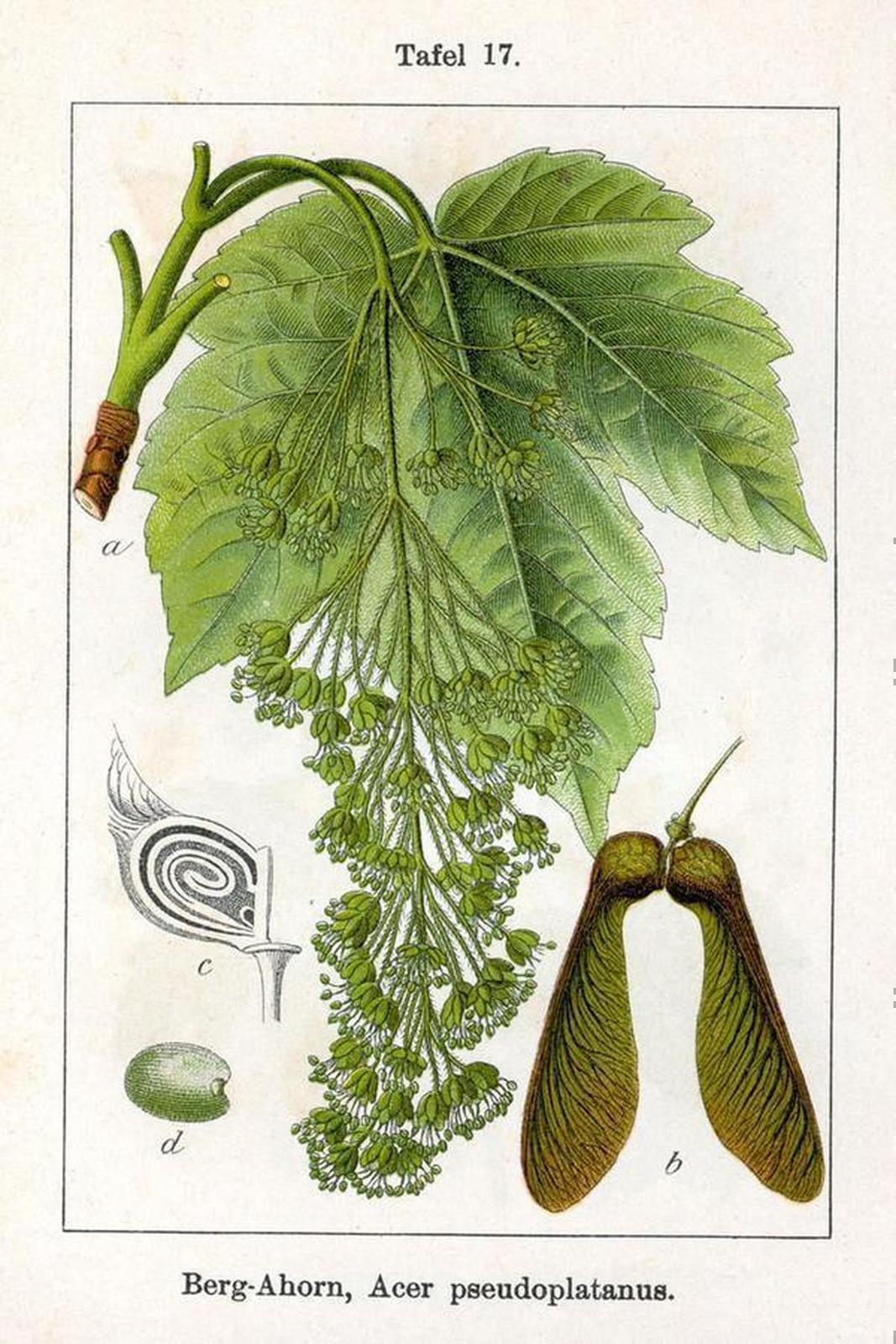Acer pseudoplatanus L.
AceraceaeLa palabra “sicómoro” está compuesta por dos términos de origen griego, sicon, “higo”, y moros, “moral”, por lo que la propia etimología, como sucede en muchas ocasiones, nos está describiendo el árbol: es una higuera cuyas hojas se parecen a las del moral. El nombre específico viene a su vez del parecido de sus hojas con las del género platanus.
Al parecer el origen del árbol es el sur de Europa y norte de África.
Los antiguos egipcios conocieron un árbol de esta familia y valoraron su madera para usarla en carpintería. En este sentido, la longevidad de estos árboles, con ejemplares que pueden alcanzar los 1000 años, unida a la incorruptibilidad de su madera, probablemente motivaron el que fuera el sicómoro utilizado para construir las cajas de los sarcófagos donde descansaban las características momias de esta cultura. Los sicómoros que aparecen en la maqueta de una casa con patio encontrada en la tumba de Meket-Re (dinastía XI, del año 2000 a.C.) que hoy podemos contemplar en el Metropolitan de Nueva York, son un testimonio material de que árboles de este tipo formaron parte del paisaje y de la vida cotidiana del antiguo Egipto.
Una importante partida de 300 ejemplares de acer pseudoplatanus llegó al Alcázar de Sevilla a finales de 1910, traídos desde los Reales Sitios de la Granja de San Ildefonso. Actualmente solo existe un individuo en el Alcázar, posible descendiente de aquel importante envío en el que además del Sicómoro vinieron otras especies exóticas que terminaron por conformar la imagen y de los actuales jardines.
Procedencia
Europeo/MediterráneoCalendario
Hábitat
Morfología
 Árbol
Árbol
 Esférica
Esférica
 Simple
Simple
 Palmeada
Palmeada
 Opuesta
Opuesta
 Dentado
Dentado
 Auriculada
Auriculada
 Acuminado
Acuminado
 Caduco
Caduco
